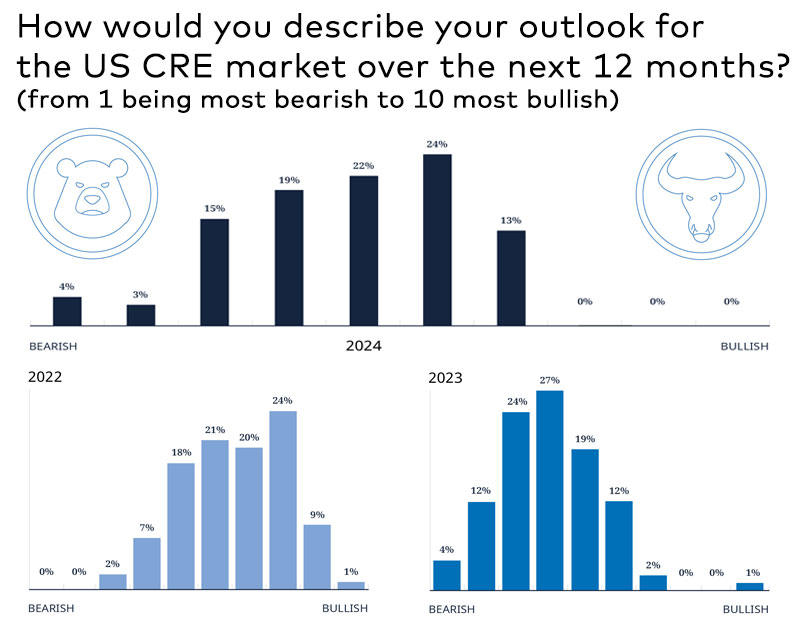Observing the Economy: A Jolt of Reality
By Ken Riggs, Real Estate Research Corp.
Much uncertainty in the economy remains, especially related to the commercial real estate market. This is not to say there hasn't been improvement from the various measures the government has initiated, starting with the injection of funds from the Troubled Asset Relief Program in 2008 used to purchase assets and equity from the financial institutions and to strengthen the financial sector.
By Ken Riggs, President & CEO, Real Estate Research Corp.
With growth still very weak, inflation nearly non-existent, and the unemployment rate at 9.6 percent (the longest period of time that the unemployment rate has been 9.5 or higher since the U.S. began keeping records in 1948), it was no surprise that the Federal Open Market Committee decided to purchase another $600 billion of treasuries over the next eight months in an attempt to re-ignite the economy. For some observers of the economy, this came as welcome news, although they would have liked to see even more stimulus. For others, the addition of $600 billion of treasury purchases was a jolt of reality, reminding us that the economy is definitely not out of the woods.
Much uncertainty in the economy remains, especially related to the commercial real estate market. This is not to say there hasn’t been improvement from the various measures the government has initiated, starting with the injection of funds from the Troubled Asset Relief Program in 2008 used to purchase assets and equity from the financial institutions and to strengthen the financial sector. Soon after, the FOMC lowered short-term interest rates to near-zero percent, and has kept them at this record low pace. Then there was the purchase of $1.7 trillion in U.S. treasury debt and mortgage securities that ended this spring. These measures have been successful in stimulating top tier markets, properties, and prices, and also have helped to expedite distressed property sales. However, a big share—perhaps the majority of property loans—has yet to be addressed.
It is no surprise that a great deal of uncertainty still dominates the market. Real estate became an increasingly significant percentage of the risk-based capital structure of banks over the past 20 years, but even when the overweighting in real estate became commonly known, uncertainty about whether reserves were high enough to cover potential losses or whether the transparency was enough to unmask the accounting treatments of loan losses remains. In fact, commercial real estate risk for banks remains extremely high. Downgrades from internal ratings have yet to take place, which could take another 3 years to run their course. In addition, refinancing is a high-risk element to recovery, and there are other still-hidden issues related to commercial real estate loans, especially with regard to loss of property value, in the smaller banks.
RERC’s third quarter value versus price ratings, as depicted in the fall 2010 RERC Real Estate Report, reflect this view. Value versus price ratings declined or remained stagnant during third quarter 2010, indicating that RERC’s institutional investment survey respondents felt that the value of commercial property is losing ground and is barely equal to its price. The industrial property sector continued to receive the highest rating, although the rating declined slightly to 5.6 on a scale of 1 to 10, with 10 being high. The value versus price ratings for the hotel and apartment sectors held their own from the previous quarter, with the hotel sector rating at 5.3 and the apartment rating at 5.2.
The value versus price ratings for the office and retail sectors declined to 4.8 each, indicating survey respondents’ views that the value of these two sectors was less than their price, and that lower prices for retail and office properties, in general, may be warranted.
RERC believes that it is a positive sign, however, that the market is taking a long time to clear itself, and that the guiding hand provided by this Keynesian economic approach makes it more likely that the market will not crater. However, even if this approach does prove to be the right one, we still have a long way yet to go before the economy recovers and before the banks’ balance sheets return to positive territory for commercial real estate. The rest of the commercial real estate story will play out over the next three years at a hopefully non-disruptive pace, as the best properties continue to trade and the distressed property situations get resolved and cleared off balance sheets. Given where we have been, this is not a bad future scenario.








You must be logged in to post a comment.